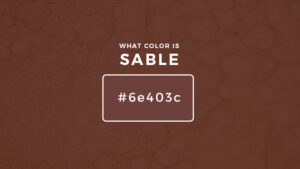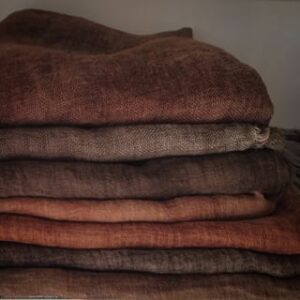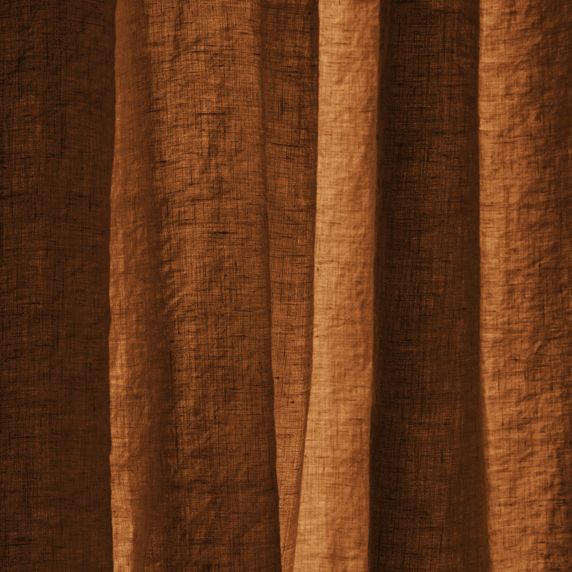The Origins of Sable Color: A Historical Journey
Introduction to Sable Color
Emergence in Art and Fashion
Sable, a color that has mystified and captivated humanity for centuries, first made its mark in the realms of art and fashion. It’s a hue that resonates with depth, luxury, and versatility. Historical records show its prominence in early tapestries and royal attire, symbolizing status and opulence. The color’s evolution in fashion is a testament to its enduring appeal, gracefully transitioning from medieval cloaks to modern haute couture.

Symbolism in Different Cultures
In various cultures, sable has held significant symbolic meanings. For instance, in some Eastern traditions, it represents mourning and solemnity, while in Western cultures, it often denotes sophistication and elegance. This duality of interpretation reflects the color’s complexity and its ability to evoke different emotions and connotations.
Historical Roots of Sable Color
Ancient Civilizations and Sable
Tracing back to ancient civilizations, sable was a color often reserved for the elite. In Egypt, it was used in intricate hieroglyphics, while in Rome, it adorned the robes of senators. This historical exclusivity of sable underscores its significance in early societal structures.
Sable in Medieval and Renaissance Art
During the Medieval and Renaissance periods, sable color played a pivotal role in art. It was a favorite among artists for creating depth and contrast, evident in the works of renowned painters. This era marked the rise of sable as a key element in visual storytelling, enhancing the emotional impact of the artworks.

Sable in Nature: A Biological Perspective
Animal Kingdom: Examples of Sable Coloring
In the animal kingdom, sable coloring is a marvel of nature. From the majestic fur of the sable antelope to the deep shades of certain bird feathers, this color demonstrates nature’s diversity and beauty. Understanding the role of genetics in these natural occurrences provides insight into the color’s biological underpinnings.



Genetic Basis of Sable Color
The genetic mechanisms behind sable coloring in animals are fascinating. Specific gene combinations result in this unique pigmentation, making it a subject of interest in biological studies. This scientific perspective adds another layer to our understanding of sable’s occurrence in nature.
Sable in the World of Art and Literature
Depictions in Classic Literature
Classic literature is replete with references to sable color, often used to convey mood, setting, or character traits. From Shakespeare’s sonnets to Dostoevsky’s novels, sable has been a powerful literary device, enriching the narrative with its symbolic depth.
Sable in Visual Arts: A Historical Overview
The journey of sable in visual arts is as old as the history of painting itself. Its presence in early cave paintings to its use in modern abstract art showcases its versatility and enduring relevance in the art world.
Cultural Significance of Sable
Sable in Traditional Ceremonies and Rituals
In many cultures, sable color holds a sacred place in ceremonies and rituals. It’s often associated with solemnity, reverence, and sometimes mystery. This cultural aspect highlights the color’s deep-rooted significance in human traditions.
Modern Interpretations and Usage
Today, sable continues to evolve in its cultural interpretations. In contemporary art, fashion, and media, it symbolizes various concepts from elegance to rebellion, demonstrating its adaptability to changing times and trends.

Sable in Fashion: A Timeless Trend
Evolution of Sable in Clothing
The evolution of sable in fashion is a story of enduring elegance. From medieval garments to modern runways, it has been a color of choice for designers seeking to convey sophistication and timeless style.
Sable in Contemporary Fashion Design
In contemporary fashion, sable plays a crucial role. It’s a favorite for evening wear, business attire, and casual elegance, proving its versatility across different styles and occasions.



The Science of Sable: Pigments and Dyes
Natural vs. Synthetic Sable Colors
The creation of sable color has evolved from natural sources like minerals and plants to sophisticated synthetic dyes. This transition reflects the advancements in color science and technology, ensuring consistency and availability of this sought-after hue.
Techniques of Achieving Sable in Textiles
Achieving the perfect shade of sable in textiles is an art in itself. It involves precise techniques and combinations of dyes, showcasing the intricate process behind this captivating color.


Sable in Architecture and Interior Design
Historical Buildings and Sable Color
Sable has been a prominent color in architecture, evident in historical buildings around the world. Its use in these structures adds a sense of gravity and timelessness, enhancing their aesthetic and historical value.
Sable in Modern Architecture and Decor
In modern architecture and interior design, sable is used to create bold statements and sophisticated ambiance. Its versatility makes it suitable for various design styles, from minimalist to luxurious.
The Sable Color in Advertising and Branding
Psychological Impact of Sable in Marketing
The psychological impact of sable in advertising and branding is significant. It’s often used to convey luxury, reliability, and strength, influencing consumer perceptions and decisions.
Famous Brands Using Sable Color
Many famous brands have adopted sable as part of their visual identity. This choice reflects the color’s ability to evoke feelings of trust, sophistication, and timelessness.
Global Influence of Sable
Sable in Eastern vs. Western Cultures
The perception and use of sable color vary significantly between Eastern and Western cultures. This contrast offers a fascinating study of how color interpretation is influenced by cultural contexts.
Sable’s Role in Global Trade and Economy
Sable color has played a role in global trade and economy, particularly in the fashion and textile industries. Its demand and influence in these sectors highlight its economic significance.
The Future of Sable Color
Emerging Trends and Future Predictions
Looking ahead, sable color is set to continue its journey in various fields. Emerging trends in fashion, technology, and sustainability are likely to shape its future applications and perceptions.
Sustainable Practices in Producing Sable Color
Sustainability in producing sable color is becoming increasingly important. Eco-friendly dyes and practices are being developed to meet the growing demand for sustainable fashion and design solutions.
Conclusion: The Everlasting Appeal of Sable Color
In conclusion, “The Origins of Sable Color: A Historical Journey” reveals a rich tapestry of history, culture, art, and science. This enigmatic hue continues to captivate and inspire, maintaining its allure through the ages. Its story is a testament to the enduring beauty and versatility of sable, a color that transcends time and trends.

